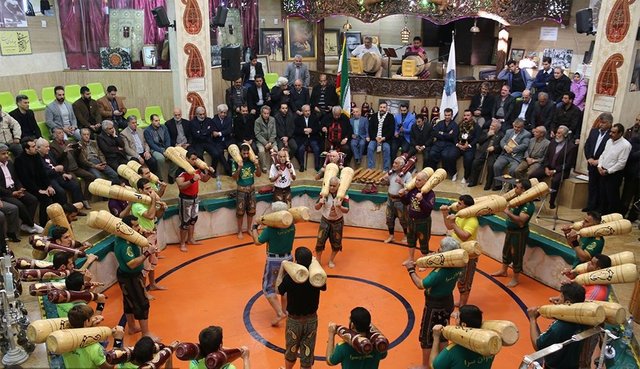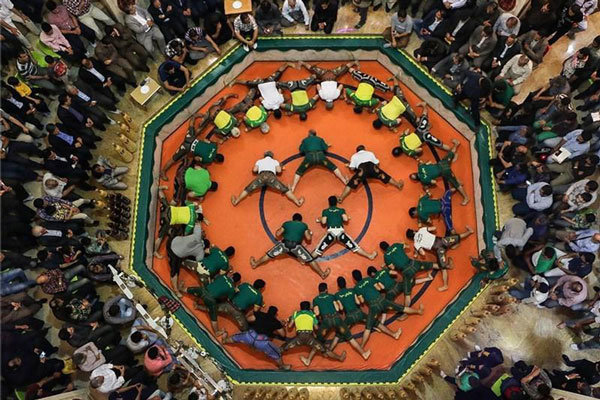Persian old wrestling game, a tourism attraction for culture explorers
Are you type of Tourist, who plans for his/her trip through LonelyPlanet, FourSquare and Trip Advisor?
well, you will enjoy Marbella and New York thoroughly, maybe, but not places like Iranian cities! an emerging market is an emerging society as well; and exploring deep social cultural attractions are where you will feel the difference.
Zoorkhaneh and Varzesh Bastani (best translated to ancient athletic exercises) is just an example. a mixture of sport and traditional music of Iran.

Pahlevāni and zoorkhāneh customs is the name engraved by UNESCO for varzesh-e pahlavāni or "old game", a customary arrangement of sports initially used to prepare warriors in Iran and nearby grounds. Outside Iran, zoorkhanehs can be found in Azerbaijan, and they were brought into Iraq in the mid-nineteenth century, where they appear to have existed until the 1980s. It consolidates hand to hand fighting, exercises, quality preparing and music.
Perceived by UNESCO as the world's longest-running type of such preparing, it wires components of pre-Islamic Persian culture (especially Zoroastrianism, Mithrāism and Gnosticism) with the most profound sense of being of Shia Islam and Sufism. Drilled in a domed structure called the zurkhāneh, instructional courses comprise for the most part of custom gymnastic developments and peak with the center of battle hone, a type of accommodation hooking called koshti pahlavāni.
Customary Iranian wrestling (koshti) goes back to antiquated Persia and was said to have been rehearsed by Rustam, fanciful Iranian saint of the Shahnameh epic. While people styles were rehearsed for wear by each ethnic gathering in different regions, hooking for battle was viewed as the specific claim to fame of the zourkhāneh.
The first motivation behind these establishments was to prepare men as warriors and impart them with a feeling of national pride in expectation for the coming battles. The Mithrāic outline and ceremonies of these foundations bear demonstration of its Parthian starting point (132 BC - 226 AD). The zourkhaneh arrangement of preparing is what is currently known as varzesh-e bastani, and its specific type of wrestling was called koshti pahlevani, after the Parthian word pahlevan meaning legend.

The customary exercise center in which varzesh-e bastani is drilled is known as the zurkhaneh, truly the "place of quality". These exercise centers are secured structures with a solitary opening in the roof, with an indented 1m-profound octagonal or round pit in the inside (Gowd). Around the gowd is an area for the crowd, one for the performers, and one for the competitors. A picture of Ali is held tight the mass of each zurkhāneh. A yearning part might be a male from any social class or religion, yet they should first spend no less than a month viewing from the crowd before they can join. Customarily, the zurkhānehs requested no installment from their competitors, and depended rather on open gifts.
Consequently, the zurkhāneh gave group administrations and security. One case is the "throwing of blooms" service in which competitors held koshti matches and different presentations of quality to raise reserves for the poor. There are today 500 zurkhaneh in Iran and every ha solid connections to their nearby group. Zurkhanehs have usually had solid political affiliations, either upholding or censuring specific governments.
This kind of games strategy is said to be a characteristic expansion of the energetic idea of zurkhāneh preparing going back to the days when pahlevans served in the lord's court.
looks pretty cool, thanks for sharing!!
thanks for reading, I keep writing ;)
Check this